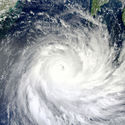GNS scientists used cutting-edge climate1 science to inspire primary school students to drive down their school-run carbon dioxide2 emissions.
The project, Drive it Down! Measuring and mitigating school-gate transport emissions, installed atmospheric greenhouse gas3 sensors at the gates of participating schools to record the emissions patterns from school drop-off and pick-up during term time and school holidays.
For the average New Zealander, transport contributes 90% of their personal, direct carbon dioxide emissions. People who drive to work or school can reduce their own emissions by around 20% simply by swapping to a low-carbon transport option one day per week, but because emissions are invisible, it is difficult to connect changes in our own behaviour to changes in the atmosphere4.
Drive it Down! – carbon cycle resources
The project further inspired a suite of resources to teach younger students about the carbon cycle5. The carbon cycle is key to understanding how the climate system works and how humans influence the Earth’s climate with increased CO2 emissions. The resources help to develop scientific literacy6 – armed with this knowledge, ākonga7 are encouraged to create student-led initiatives to reduce fossil fuel8 emissions.
Drive it Down! Measuring and mitigating9 school-gate transport emissions is a project aimed at ākonga, kaiako10 and the wider public to highlight that every individual’s behaviour measurably impacts CO2 emissions.
Drive it Down!
The resources are designed for primary school students (years 5–6 and above) and can be adapted to suit local curriculum, curriculum levels and the learning needs of ākonga. Although concepts like the carbon cycle are often part of the secondary curriculum, the Drive it Down! resources use simple yet effective diagrams to illustrate and explain the concepts.
Curriculum links, key science concepts and ao Māori connections
Drive it Down! resources support learning about the nature of science11 and the science capabilities:
- use science vocabulary, symbols and conventions
- use and critique information associated with the global (and urban) carbon cycle
- interpret graphs, carbon cycle diagrams and written text
- engage with science by using their growing science knowledge to take action in changing transport behaviours.
The resources cover science concepts (big ideas), including:
- interacting systems including the carbon cycle and the water cycle
- the differences between weather12 and climate
- chemical and physical changes – how matter13 changes between solids, liquids and gases14
- introductory learning about the structure (particle15 nature) of matter
- sources and forms of energy.
Using the Understand, Know, Do framework:
- Understand: Carbon16 – for example, in the atmosphere, rocks and soil, plants and animals – moves around the Earth through the carbon cycle.
- Know: Humans are adding carbon (CO2) into the atmosphere (via fossil fuels) faster than it can be removed. CO2 and other gases cause heat17 to be trapped in the atmosphere, which is causing the global climate to change.
- Do: Use/incorporate this knowledge to address lowering local/personal CO2 emissions.
Drive it Down! has compiled an online kuputaka and crossword puzzle using kupu that are components of hurihanga waro18 (carbon cycle) and associated with āhuarangi hurihuri19 (climate change20).
Drive it Down! resources on the Science Learning Hub
The Hub has worked with GNS to reproduce some of their resources:
- Drive it Down! – the carbon cycle and climate change – interactive planning pathway
- The carbon cycle and climate change – key terms – article
- Climate change and the carbon cycle – kuputaka – article
- Drive it Down! – climate change discussions – activity
- Drive it Down! – reducing emissions at your school – activity
- Drive it Down! – climate change and carbon cycle quiz (online or paper-based) – activity
Additional Drive it Down! resources
Drive it Down! carbon cycle teaching resources can be accessed here. They include:
- an overview of the carbon cycle teaching resources
- a full-colour booklet introducing the science of climate change, the global carbon cycle, carbon sources and sinks, the urban carbon cycle, atmospheric mixing and more
- discussion cards
- memory cards
- Kahoot! quiz.
The Carbon Cycle and Climate Change interactive platform presents the Carbon cycle and climate change booklet in an interactive format – along with quizzes, games and media.
Auckland GHG Invaders is an online game in which players absorb greenhouse gases21 using climate-friendly transport options (desktop only).
How to use the material
A good place to start is the Drive it Down! – the carbon cycle and climate change planning pathways interactive (below). The interactive provides a brief introduction to some of the key science concepts that underpin learning about climate change and the carbon cycle. Each pop-up within the interactive has links to articles intended to deepen understanding about the concepts.
Related content
The Hub has a wealth of resources on the topic of climate change – use the filters to narrow your search.
The Hub team has curated collections of resources related to climate change, Our atmosphere and climate 2020 and Matariki and Environment Aotearoa 2022. Sign in to make these collections part of your private collection – just click on the copy icon.
We have curated a range of supporting resources in this Climate change Pinterest board.
Teacher PLD
- Climate change – classroom competencies
- Climate change resources – planning pathways
- Dairy farming and climate change – a context for learning
- Understanding the basics of climate change
- Agency in the Anthropocene
- Exploring climate change education in primary schools
- Exploring climate change education in secondary schools
Acknowledgement
This resource has been adapted from resources created for the Drive it Down! Measuring and mitigating school-gate emissions project. Scientists from GNS Science alongside educators developed the project and resources with funding from the Ministry of Business, Innovation and Employment through the Unlocking Curious Minds fund and Te Herenga Waka University of Wellington Doctoral Scholarship. Further funding was provided by the Royal Society Te Apārangi Catalyst Fund (2020).
- climate: The weather conditions of an area averaged over a series of years, usually 30 or more.
- carbon dioxide: CO2 is a colourless, odourless, incombustible gas. It is a product of cellular respiration and combustion and is an essential component in photosynthesis.
- greenhouse gases: A natural or manmade gas that traps heat in the Earth's atmosphere and contributes to the greenhouse effect. The main greenhouse gases are water vapour, carbon dioxide (CO2), methane (CH4), nitrous oxide (N2O), ozone and industrial gases such as chlorofluorocarbons (CFCs). These gases in the Earth's atmosphere trap warmth from the Sun and make life possible. An overabundance of greenhouse gases leads to a rise in global temperatures – known as the greenhouse effect.
- atmosphere: 1. The layer of gas around the Earth. 2. (atm) A non-SI unit of pressure equivalent to 101.325 kPa.
- carbon cycle: The process by which carbon passes through the natural world.
- scientific literacy: The knowledge and understanding of science concepts and processes, which support individuals to make informed evidence-based decisions about issues that may affect them personally or have local/global impacts.
- ākonga: Student, pupil, learner or protégé.
- fossil fuel: Materials such as coal, oil and natural gas formed from the fossilised remains of plants that lived many millions of years ago. Often burned as fuel – although this releases large amounts of CO2, which contributes to global warming. Fossil fuels are also not renewable – there is a limited amount.
- mitigate: To make less severe or to lessen the intensity. For example, mitigating climate change involves reducing greenhouse gas emissions and enhancing ‘sinks’ (such as forests, oceans and soils) that store the gases.
- kaiako: A teacher or instructor.
- nature of science: The Nature of Science (NoS), is an overarching and unifying strand of the New Zealand science curriculum. Through it, students develop the skills, attitudes and values to build a foundation for understanding the world around them – understanding how science works in order to make links between scientific knowledge and everyday decisions and actions.
- weather: Daily or short-term conditions like temperature, cloud cover, precipitation and wind affecting a certain area.
- matter: The basic structural component of all things that have mass and volume.
- gases: The state of matter distinguished from the solid and liquid states. Gases have the ability to diffuse readily and to become distributed uniformly throughout any container.
- particle: A tiny piece of matter. A particle may refer to an atom, part of an atom, a molecule or an ion.
- carbon: A non-metal element (C). It is a key component of living things.
- heat energy (heat): Heat energy: the transfer of energy in materials from the random movement of the particles in that material. The greater the random movement of particles the more heat energy the material has. Temperature is a measure of the heat energy of a material.
Heat: the flow of energy from a warm object to a cooler object. - hurihanga waro: Carbon cycle.
- āhuarangi hurihuri: Climate change.
- climate change: The large-scale, long-term increase in the Earth’s average temperatures, with associated changes in weather patterns. There is significant scientific evidence that warming is due to increased quantities of greenhouse gases in the atmosphere, with most of the rise due to human activity.
- greenhouse gases: A natural or manmade gas that traps heat in the Earth's atmosphere and contributes to the greenhouse effect. The main greenhouse gases are water vapour, carbon dioxide (CO2), methane (CH4), nitrous oxide (N2O), ozone and industrial gases such as chlorofluorocarbons (CFCs). These gases in the Earth's atmosphere trap warmth from the Sun and make life possible. An overabundance of greenhouse gases leads to a rise in global temperatures – known as the greenhouse effect.









